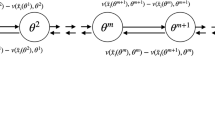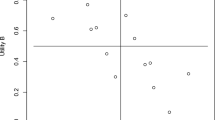Abstract
This paper presents a comprehensive analysis of voluntary binary participation in the provision of public goods in a full information setting where the marginal product of participation is positive but decreases with the number of participants. Our study extends Palfrey and Rosenthal's (1984) binary model. It deals with an important special case of uniform multi-person prisoner's dilemma, Schelling (1978), that might be conceived of as the discrete counterpart of the continuous model where both players' contributions and the production function of the public good are continuous, Olson (1965), Chamberlin (1974), McGuire (1974). For pure strategies, we find that as in the continuous setting, Nash equilibria are inefficient and the public good is underprovided. Surprisingly, for mixed strategies, the symmetric equilibria are inefficient, however, even in expected terms, the public good can be overprovided. The concurrence between inefficiency and underprovision of the public good reemerges, provided that one of the following holds: (i) the number of potential participants is sufficiently large, (ii) the marginal product of participation is sufficiently stable, (iii) the costs of participation are sufficiently low or sufficiently high, or (iv) the identical players are constrained to select identical strategies.
Similar content being viewed by others
References
Bergstrom T, Blume L, Varian H (1986) On the private provision of public goods. J Publ Econ 29:25–49
Chamberlin J (1974) Provision of collective goods as a function of group size. Am Polit Sci Rev 65:707–716
Guttman JM (1978) Understanding collective action: matching behavior. Am Econ Rev 68:251–255
McCaleb TS, Wagner RE (1985) The experimental search for free riders: some reflections and observations. Public Choice 47:479–490
McGuire M (1974) Group size, group homogeneity and the aggregate provision of a pure public good under Cournot behavior. Public Choice 18:107–126
Moulin H (1982) Game theory for the social sciences. New York University Press, New York
Olson M (1965) The logic of collective action. Harvard University Press, Cambridge
Palfrey T, Rosenthal H (1984) Participation and the provision of discrete public goods: a strategic analysis. J Publ Econ 24:171–193
Schelling TC (1978) Micromotives and macrobehavior. New York, W.W. Norton
Yaari, ME (1981) Rawls, Edgeworth, Shapley, and Nash theories of distributive justice reexamined. J Econ Theory 24:1–39
Author information
Authors and Affiliations
Additional information
We would like to thank Howard Rosenthal and two anonymous referees for very helpful comments and suggestions.
Rights and permissions
About this article
Cite this article
Gradstein, M., Nitzan, S. Binary participation and incremental provision of public goods. Soc Choice Welfare 7, 171–192 (1990). https://doi.org/10.1007/BF01560583
Received:
Accepted:
Issue Date:
DOI: https://doi.org/10.1007/BF01560583




